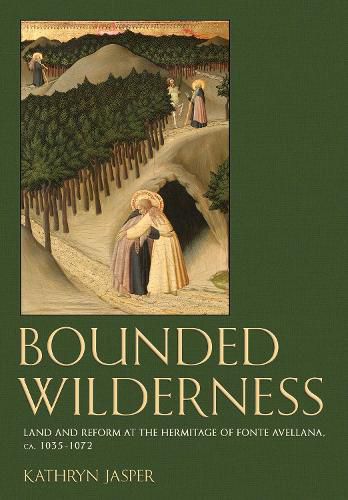Readings Newsletter
Become a Readings Member to make your shopping experience even easier.
Sign in or sign up for free!
You’re not far away from qualifying for FREE standard shipping within Australia
You’ve qualified for FREE standard shipping within Australia
The cart is loading…






In Bounded Wilderness, Kathryn Jasper focuses on the innovations undertaken at the hermitage of Fonte Avellana in central Italy during the eleventh century by its prior, Peter Damian (d. 1072). The congregation of Fonte Avellana experimented with reforming practices that led to new ways of managing property and relations among clergy, nobles, and the laity.
Jasper charts how Damian's notion of monastic reform took advantage of the surrounding topography and geography to amplify the sensory aspects of ascetic experiences. By focusing on monastic landscapes and land ownership, Jasper demonstrates that reform extended beyond abstract ideas. Rather, reform circulated locally through monastic networks and addressed practical concerns such as property boundaries and rights over water, orchards, pastures, and mills. Putting new sources, both documentary and archaeological, into conversation with monastic charters and Damian's letters, Bounded Wilderness reveals the interrelationship of economic practices, religious traditions, and the natural environment in the idea and implementation of reform.
$9.00 standard shipping within Australia
FREE standard shipping within Australia for orders over $100.00
Express & International shipping calculated at checkout
In Bounded Wilderness, Kathryn Jasper focuses on the innovations undertaken at the hermitage of Fonte Avellana in central Italy during the eleventh century by its prior, Peter Damian (d. 1072). The congregation of Fonte Avellana experimented with reforming practices that led to new ways of managing property and relations among clergy, nobles, and the laity.
Jasper charts how Damian's notion of monastic reform took advantage of the surrounding topography and geography to amplify the sensory aspects of ascetic experiences. By focusing on monastic landscapes and land ownership, Jasper demonstrates that reform extended beyond abstract ideas. Rather, reform circulated locally through monastic networks and addressed practical concerns such as property boundaries and rights over water, orchards, pastures, and mills. Putting new sources, both documentary and archaeological, into conversation with monastic charters and Damian's letters, Bounded Wilderness reveals the interrelationship of economic practices, religious traditions, and the natural environment in the idea and implementation of reform.